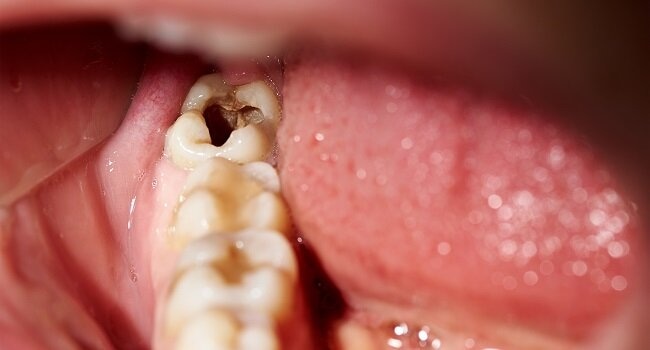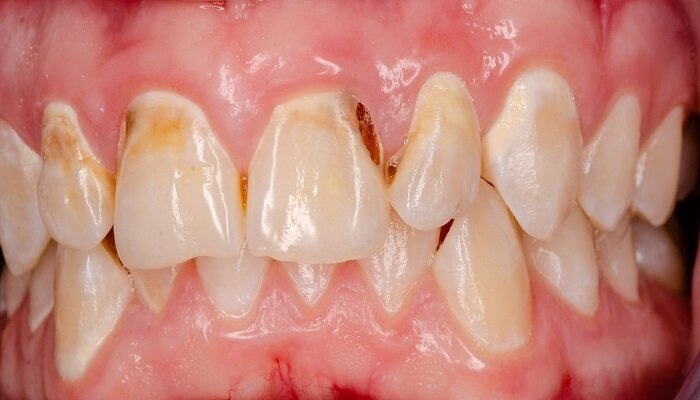Tooth decay is a common dental issue dentists come across with their patients each day.
Tooth decay is a condition that can hit anyone regardless of age. It mainly affects individuals that consume lots of sugar in their diets. Consuming lots of sugary foods and drinks creates a conducive environment for plaque buildup. If left unchecked, excessive plaque buildup causes other dental issues like cavities, gum disease, and dental abscesses – all of which are severe dental issues that could cost an arm and a leg to treat.
Due to how common tooth decay is, many people are left wondering if it’s reversible. If you’re among those asking this question too yourself, continue reading to learn more about tooth decay, including its symptoms, if tooth decay is reversible, and how to prevent it.
What Is Tooth Decay?
Tooth decay is the first phase of cavity development.
Tooth decay occurs when the acids produced by plaque and bacteria in your mouth interfere with the mineral content in your teeth, causing the teeth’ enamel to become weak. Elements in your diet can also weaken the enamel on the teeth’ surface.
Can You Reverse Tooth Decay?
Whether or not you can reverse tooth decay depends on when it’s spotted. Timely intervention can help reverse decay when it has only interfered with your tooth’s enamel or outer layer.
If the decay has proceeded to the softer inner segment of your tooth, it can’t be reversed. It’s essential to seek treatment from professionals like Windham Dental group immediately after you spot signs of tooth decay. This way, you get proper, timely treatment to prevent the condition from progressing further. Failure to which, tooth decay may continue eating into your teeth and cause severe dental issues.
What Causes Tooth Decay?
Tooth decay is caused by bacteria that live happily in your mouth 24/7. They feast on sugary foods and beverages you consume, then they produce harmful acids that dissolve in your tooth enamel. If you love sugary diets and other foods that break into sugars, you’re an ideal candidate for decay and cavity.
Suppose you don’t practice good dental hygiene, including brushing at least twice and flossing once a day. The acids produced by bacteria in your mouth build up plaques that develop into tartar with time.
Signs Of Tooth Decay
Though tooth decay might not be characterized by pain, it comes with the following symptoms:
- Bad taste in the mouth;
- Halitosis or bad breath;
- Tooth sensitivity after eating or drinking cold or hot food and drinks;
- Toothache characterized by sharp pain capable of depriving you of sleep;
- Black, gray, or brown spots on your teeth; and others.
An individual with tooth decay may experience all or a few symptoms.
What Are The Stages Of Tooth Decay?

Tooth decay happens in stages. As earlier stated, catching it in the first stage is the key to reversing it. The five stages of tooth decay are as follows:
Demineralization: This is the first stage of tooth decay, characterized by tiny white spots on teeth. These spots are formed after the minerals in the enamel have broken down.
Enamel Decay: If you don’t treat the first stage of tooth decay, it proceeds to enamel decay. During this stage, holes might become visible, and the white spots become brown.
Dentin Decay: Dentin is the softer layer below the enamel. After the plaque and bacteria have accessed dentin, cavities form quickly. At this point, your teeth become sensitive, and the brown spots become darker.
Pulp Damage: Your teeth are alive, thanks to the pulp, which contains nerves and blood vessels. These vessels and nerves supply your teeth with nutrients to support their health. Once the cavities have reached the pulp, you begin experiencing pain. You might also develop swelling and readiness on the gums surrounding the affected tooth. The dark brown spots become even darker or change color to black.
Abscessed Tooth: You’re more likely to develop an infection following an abscessed tooth. This dental condition causes pus-filled pockets to form at the tip of the tooth root. Abscessed tooth symptoms include pain that proceeds to the jaw or face. And you might develop swelling on the face and lymph nodes in your neck. In severe cases, abscesses can spread to other body parts, including the brain.
How To Prevent Tooth Decay
Since you can’t reverse tooth decay if it has progressed to later stages, preventing it from occurring is vital. There are easy lifestyle changes that can prevent you from developing this dental condition and also stop it from progressing. These changes include:
- Improving your oral hygiene;
- Reducing sugar intake;
- Changing your toothbrush regularly;
- Drinking lots of water;
- Scheduling regular professional dental checkups; and the like.
Sugars are the most common culprits for dental decay. Prevent too much sugar from accumulating in your mouth by brushing your teeth after consuming sweets and other sugary treats.
Conclusion
Tooth decay is among the most common dental issues among people of all ages. This condition affects people who consume sugary food and fail to care for their teeth. Tooth decay is reversible when caught during the early stages but irreversible after progressing to the final stages. The best treatment for tooth decay is preventing it from developing by maintaining proper oral hygiene and saying no to sugary foods and drinks.


















